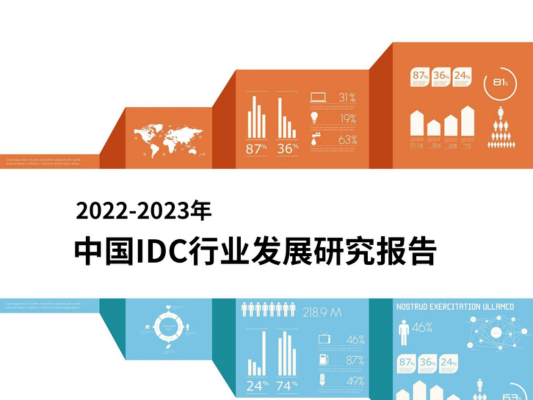Data Centers as a Core Real Estate Asset
Over the past two decades, data centers have quietly evolved from niche infrastructure into one of the fastest-growing categories of global real estate. Once viewed as back-office IT facilities, data centers are now mission-critical assets powering cloud computing, e-commerce, artificial intelligence, and digital payments. Their importance to the global economy has elevated them into the same league as office, industrial, and retail property classes.
This transformation has given rise to a powerful financial instrument: the data center Real Estate Investment Trust (REIT). By pooling investor capital and channeling it into professionally managed portfolios of income-generating data centers, REITs have democratized access to this booming sector.
For investors, data center REITs represent a way to capture growth from digital transformation without directly managing infrastructure. For operators, REIT structures provide access to capital markets, fueling mega-campus development and international expansion. By 2025, data center REITs are no longer emerging—they are a dominant force reshaping how infrastructure is financed, owned, and scaled.
What Is a Data Center REIT?
A Real Estate Investment Trust (REIT) is a corporate structure that owns, operates, or finances income-producing real estate. By law, REITs must distribute at least 90% of taxable income to shareholders as dividends, making them attractive for income investors.
Data center REITs specialize in owning and leasing data center facilities. Unlike traditional landlords, they operate at the intersection of real estate and technology infrastructure. Tenants range from hyperscalers like Amazon Web Services and Microsoft Azure to enterprises leasing wholesale colocation suites.
Key features of data center REITs include:
Stable cash flows from long-term leases with investment-grade tenants.
Scalability through access to public capital markets.
Portfolio diversification across geographies, tenant industries, and facility types.
The business model is straightforward: build or acquire facilities, lease them to operators or enterprises, and generate recurring revenue while reinvesting in expansion.
Why Data Center REITs Are Thriving in 2025
Explosive Demand for Digital Infrastructure
AI training clusters, streaming platforms, and digital-first enterprises are driving unprecedented demand for power-dense, interconnected data centers. REITs are uniquely positioned to capture this growth by financing the rapid construction of mega campuses.
Unlike private operators constrained by balance sheets, REITs can raise billions in equity and debt to fund development pipelines. This access to capital means they can respond faster to hyperscaler requirements, securing anchor tenants that guarantee long-term income.
Reliable, Recession-Resistant Returns
In uncertain macroeconomic environments, data center REITs offer stable, recurring cash flows. Even during downturns, demand for digital services—cloud, e-commerce, and SaaS—remains resilient. This resilience positions data center REITs as a defensive growth play in investor portfolios.
For dividend-focused investors, yields from data center REITs provide predictable income streams, supported by long-term triple-net leases with blue-chip tenants.
Global Expansion Opportunities
Digital infrastructure is no longer concentrated in North America. REIT-backed operators are expanding aggressively into Europe, Latin America, Africa, and APAC, chasing hyperscalers and sovereign cloud deployments.
Investors gain exposure to global digital growth trends without having to navigate the complexities of local permitting, land acquisition, or utility negotiations.
Leading Data Center REITs and Their Strategies
Equinix (EQIX)
The largest global data center REIT, Equinix, operates over 250 facilities across five continents. Its model focuses on retail colocation and interconnection ecosystems, creating dense digital marketplaces where enterprises and cloud providers connect directly.
Equinix differentiates by monetizing interconnection services, which drive higher-margin revenue beyond traditional space and power. Its REIT structure allows continuous reinvestment into expanding metros and acquiring strategic assets.
Digital Realty (DLR)
Digital Realty is the second-largest data center REIT, known for its wholesale colocation and hyperscale campuses. With over 300 data centers worldwide, it focuses on providing massive, power-dense environments for cloud giants.
Its strategy includes developing mega campuses with phased expansion, often in partnership with sovereign wealth funds or infrastructure investors. Digital Realty also invests heavily in sustainable operations, aligning with ESG mandates that influence investor preferences.
CyrusOne, CoreSite, and Others
Other REITs, such as CyrusOne and CoreSite (now part of American Tower), provide diversified approaches—ranging from enterprise-focused wholesale suites to edge deployments. Collectively, these REITs represent a multi-billion-dollar asset class attracting increasing analyst coverage and institutional investment.
Benefits of Data Center REITs for Investors
Dividend Income and Capital Appreciation
The REIT structure guarantees that most taxable income flows directly to shareholders. Investors benefit from steady dividends while also capturing upside from the appreciation of high-demand assets.
Portfolio Diversification
Data center REITs offer exposure to a unique real estate category with low correlation to office, retail, or hospitality. For institutional investors, this diversification enhances portfolio resilience.
Exposure to Digital Transformation
By investing in REITs, shareholders indirectly participate in the growth of cloud, AI, and digital economies. It’s a way to gain exposure to technology growth without investing directly in volatile startups or hardware manufacturers.
Benefits of Data Center REITs for Operators
Access to Capital
Operators structured as REITs can tap public markets to raise funds for land banking, power procurement, and construction. This access fuels rapid expansion that private competitors may struggle to match.
Alignment with Hyperscaler Demand
Hyperscalers increasingly prefer leasing capacity rather than building all of it themselves. REIT-backed operators are positioned to meet this demand with scale-ready campuses. The REIT structure also enhances credibility with large tenants who value long-term stability.
Accelerated Innovation
Capital availability allows REIT-backed operators to invest in next-gen cooling systems, renewable PPAs, and high-density designs—investments that smaller operators may delay. This innovation cycle keeps REITs competitive in attracting AI and HPC workloads.
Challenges Facing Data Center REITs
Valuation Pressures
As demand has surged, so have valuations. Some analysts warn that data center REITs are priced for perfection, leaving little margin for error. Rising interest rates also impact REIT valuations, as higher yields elsewhere compete with dividend returns.
Power and Permitting Constraints
Even with capital, REITs face bottlenecks in power procurement and permitting. In regions like Northern Virginia and Dublin, power moratoriums limit expansion despite strong demand. Investors must understand that capital alone cannot overcome local grid constraints.
Tenant Concentration Risk
While leasing to hyperscalers provides stability, it also creates concentration risk. A small number of tenants—Amazon, Microsoft, Google—account for a large share of REIT revenues. Any shift in hyperscaler strategy could ripple through REIT financials.
The Future of Data Center REITs
Convergence with Infrastructure Funds
Institutional capital is flooding into digital infrastructure, blurring the lines between REITs and private equity-backed operators. Expect more joint ventures between REITs, sovereign wealth funds, and infrastructure investors to finance multi-hundred-MW campuses.
Expansion into Emerging Markets
By 2030, markets like Mexico, Brazil, India, and Africa will represent a significant share of new capacity. REIT-backed operators are already planting flags in these regions to capture early demand.
ESG as a Differentiator
Investors increasingly scrutinize ESG performance. REITs that can demonstrate renewable integration, water stewardship, and carbon neutrality will attract premium valuations. Sustainability will move from optional to table stakes in REIT portfolios.
Strategic Role of Data Center REITs in 2025 and Beyond
For both investors and operators, data center REITs have become more than financial vehicles—they are strategic enablers of the digital economy. They allow hyperscalers to scale without overextending balance sheets, give enterprises access to world-class infrastructure, and offer investors a stable path into one of the most transformative asset classes of our time.
In 2025, the rise of data center REITs signals a broader shift: the financialization of digital infrastructure. As capital markets and technology ecosystems converge, the operators backed by REIT structures will set the pace of global expansion. Enterprises, investors, and policymakers alike must understand this model, because the future of digital infrastructure—and by extension, the digital economy—will be built on REIT-backed foundations.
Source: datacenters




